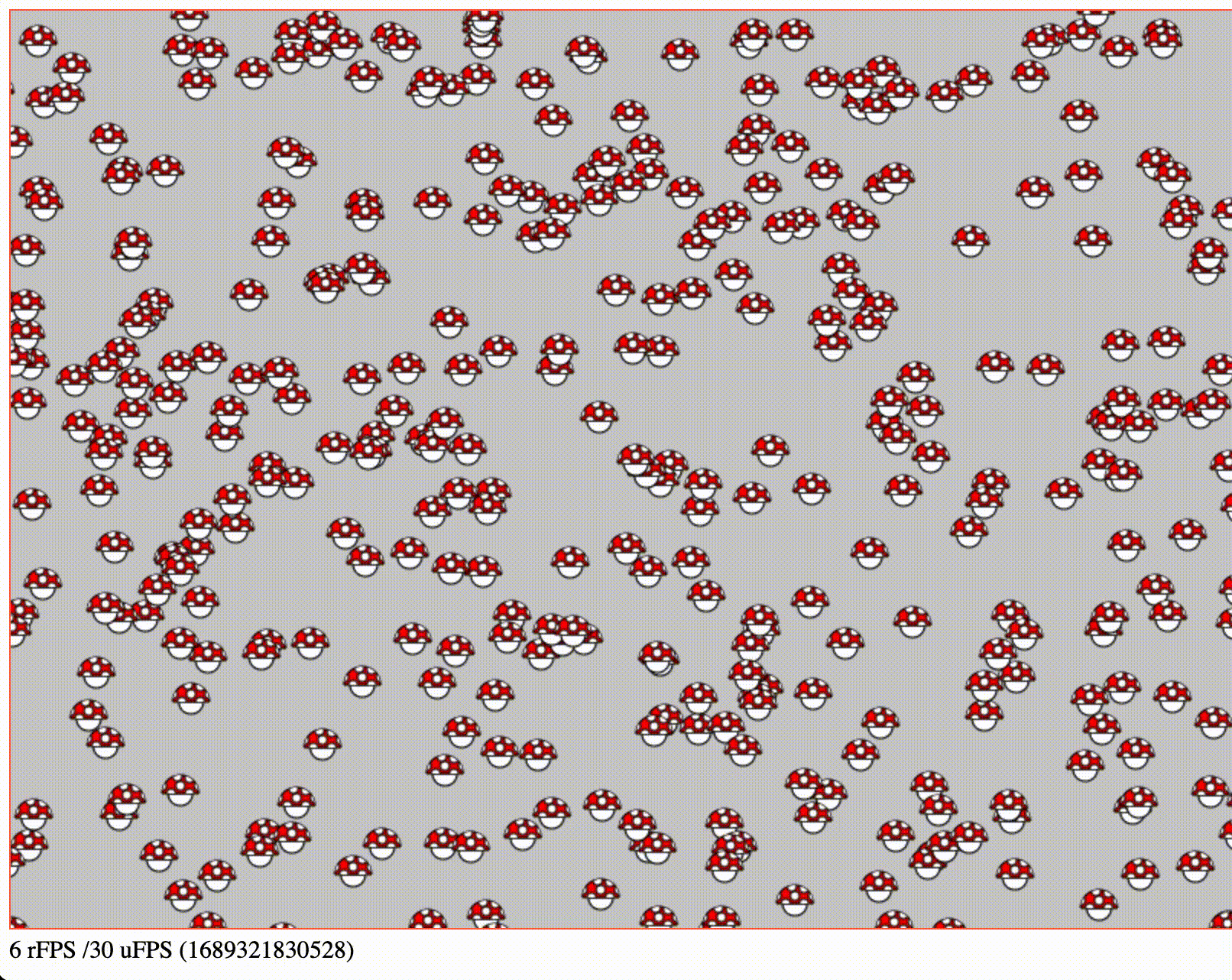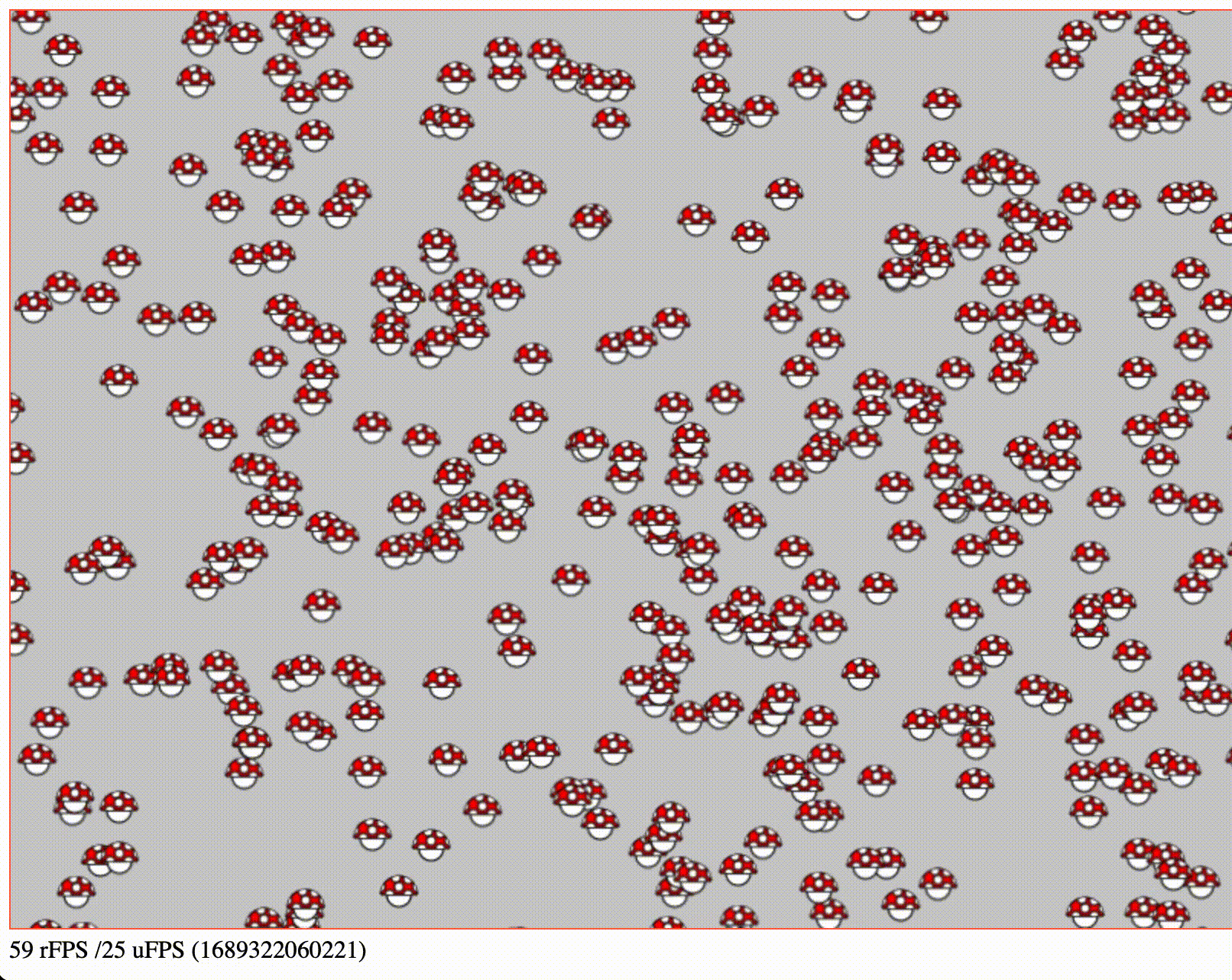Introduction
Almost every year around July, I start preparing for the js13kgames, a game dev competition that requires creating an HTML5 game that compressed weight at most 13kb. There are many ad-hoc engines that allow the participants to focus on the game instead of everything else; the problem is, I find this "everything else" at least as interesting as working on the game itself, so every year I start working on a new engine from scratch, and 90% of the time I'm not able to finish my game in time...
This year I started yet another engine/setup from scratch using TypeScript, but I decided to record here all the optimization, improvements, or anything else I found along the way, to avoid losing all this knowledge. All the code can be found here
Prerendering complex paths
For this first optimization I'm trying to render and move around the canvas a slightly complex canvas path, without adding any logic such collision detection, physic or similar.
I'm using requestAnimationFrame for the render loop and setTimeout for the update loop
In both cases I'm using this function render a mushroom shape:
const drawMush = (ctx, pos) => {
let [x, y] = pos
x = Math.round(x)
y = Math.round(y)
const m = new Path2D()
const w = 8
const tw = 12
const sr = 3
// bottom part
m.moveTo(x - w, y)
m.arc(x, y, w, 0, Math.PI, false)
ctx.fillStyle = "#fff"
ctx.fill(m)
ctx.stroke(m)
// Top part
const mt = new Path2D()
mt.moveTo(x - tw, y)
mt.arc(x, y, tw, 0, Math.PI, true)
ctx.fillStyle = "red"
ctx.fill(mt)
ctx.stroke(mt)
ctx.save()
ctx.clip(mt)
const ms = new Path2D()
spots.forEach(p => {
const [vx, vy] = p
ms.moveTo(x + vx + sr, y + vy)
ms.arc(x + vx, y + vy, sr, 0, 2 * Math.PI, false)
})
ctx.fillStyle = "#fff"
ctx.fill(ms)
ctx.stroke(ms)
ctx.restore()
}As we can see the in following image, the rendering frame rate (uFPS) drops below 10 with 400 shapes

The only optimization used in this case is to pre-render the shape inside a temporary canvas, get the content as an image and then render it to the final canvas using ctx.drawImage
export const preRender = (dim: IVec, renderFn: RenderFn) => {
const prC = document.createElement("canvas")
const [w, h] = dim
prC.width = w
prC.height = h
const ctx = prC.getContext("2d")
renderFn(ctx, [prC.width / 2, prC.height / 2])
const imgSrc = prC.toDataURL("image/png")
const img = document.createElement("img")
img.src = imgSrc
return img
}
After this optimization, the rendering framerate remain around 60 FPS.